Our First Glimpse Of The Air Force's Hypersonic Cruise Missile
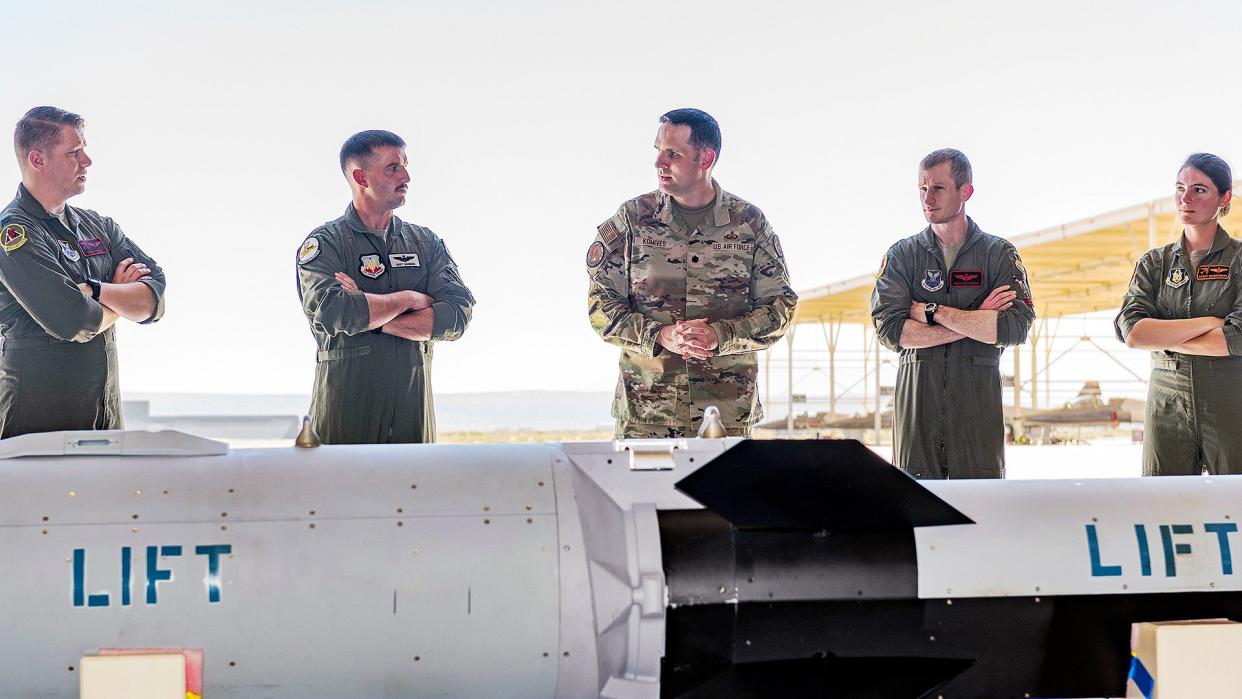
The U.S. Air Force has offered the first peek at its secretive air-breathing hypersonic cruise missile. The service also looks to have given us our best, detailed look at a live example of its now-canceled AGM-183A Air-launched Rapid Response Weapon hypersonic missile.
All of this comes from pictures released today that were taken during what was described as a "hypersonic weapon familiarization training" event at Edwards Air Force Base in California yesterday.
"U.S. Air Force Lt. Col. Jeffrey Komives, Hypersonic Employment subject matter expert, orients operational crews B-1 Lancer, B-2 Spirit, B-52 Stratofortress, and F-15E Strike Eagle units across Air Force Global Strike Command and Air Combat Command on the Air Force’s Hypersonic Attack Cruise Missile [HACM]," reads the caption of one photograph that the 412th Test Wing at Edwards released today. In the foreground of the picture, seen at the top of this story, is what appears to be a previously unseen hypersonic air-breathing cruise missile design.
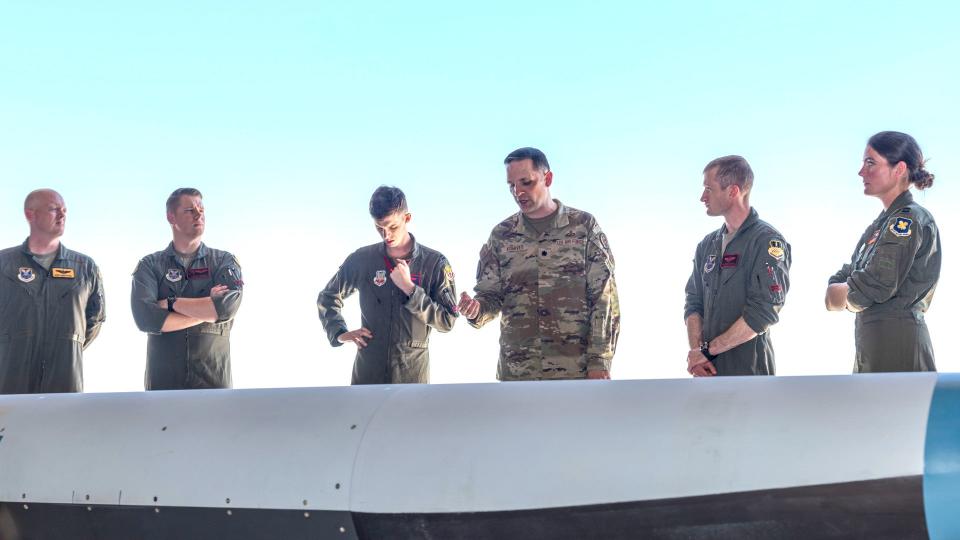
Without additional context and not being able to see the full missile, it is hard to say definitively that this missile is meant to directly represent HACM, as the picture caption implies. There is a possibility that the weapon, which may also be a test article or a mockup, could reflect a previously developed, but related design. HACM follows on directly from the Defense Advanced Research Projects Agency's (DARPA) Hypersonic Airbreathing Weapon Concept (HAWC) program, which the Air Force was closely involved with. HACM is also leveraging past testing of Boeing's HyFly 2 experimental air-breathing hypersonic vehicle and work done through the U.S.-Australian Southern Cross Integrated Flight Research Experiment (SCIFiRE).
DARPA is also now pursuing its own follow-on effort to HAWC, called More Opportunities with HAWC, or MoHAWC, which will help continue to advance relevant technologies.
In September 2022, the Air Force declared Raytheon, in cooperation with Northrop Grumman, the winner of the HACM composition. The service is hoping to begin fielding a weapon of this type through its Hypersonic Attack Cruise Missile program, or HACM, starting in 2027.
Raytheon and Northrop Grumman had previously worked together on a design as part of the HAWC program. Lockheed Martin and Aerojet Rocketdyne also teamed up on a missile that was tested under HAWC.
What can be seen of the missile in the pictures from yesterday's event at Edwards is fully in line with renderings that DARPA has previously released in relation to HAWC. It is a two-stage weapon with a large booster at the back and a narrower vehicle section in front with fins at its rear.
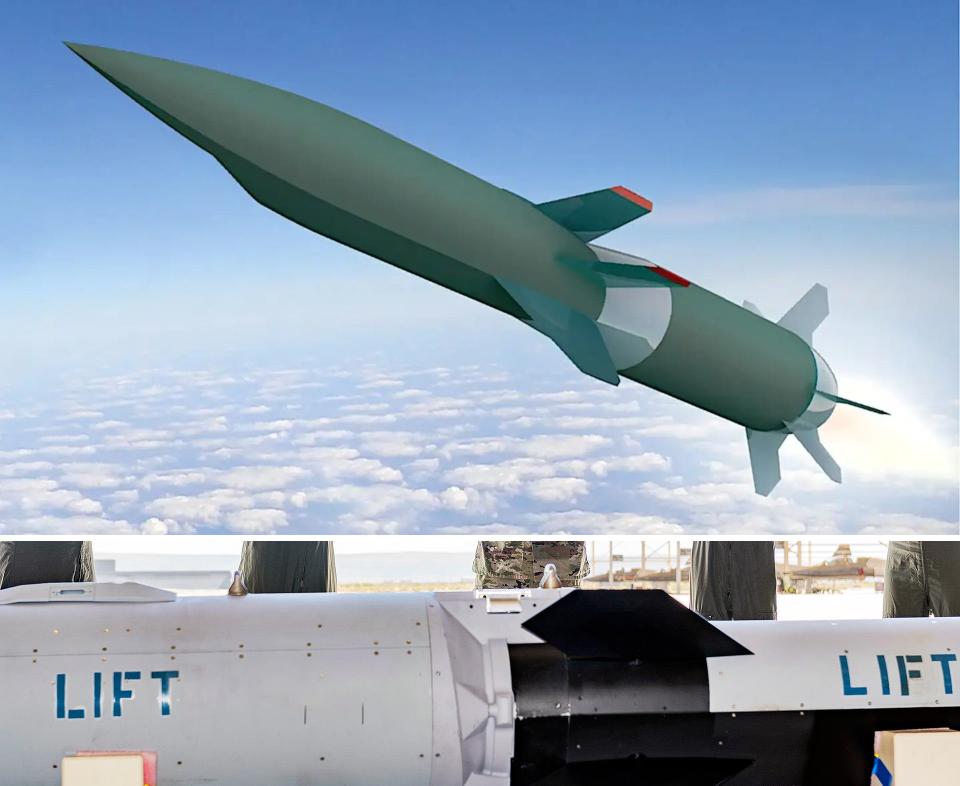
The broad understanding of how HAWC, and by extension HACM, will function is that the booster will help accelerate the complete weapon to an optimal speed before falling away. An air-breathing scramjet engine in the front section will then take over. Scramjets do not function effectively at lower speeds, requiring an initial boost up to high Mach velocity.
This two-stage design concept is also one that has been utilized in the development of other air-breathing hypersonic test vehicles in the past. This includes Boeing's aforementioned HyFly 2 and that company's missile-like scramjet-powered X-51 Waverider hypersonic test vehicle. The Air Force flight tested four X-51s between 2010 and 2013.
https://www.youtube.com/watch?v=0qGNEmDMVDU
Specific details about the Raytheon/Northrop Grumman design that was tested under HAWC and the one that the two companies are now developing under HACM are limited. In one test, "the prototype developed by Raytheon and Northrop Grumman reportedly flew more than 500 km [just under 311 miles], but it is unclear how long the scramjet was operating during that flight," according to a January 2023 report from the Congressional Budget Office (CBO).
Whatever the case, the main benefit that hypersonic cruise missiles offer over existing subsonic and even supersonic designs is the ability to cross large distances in very short amounts of time. This allows them to engage targets, especially time-sensitive ones, faster and gives opponents less time to react as a result. The extreme speed of these missiles, which are also expected to be capable of making irregular course changes and being retasked in flight, also complicates any attempts to intercept them, making them very hard to defend against.
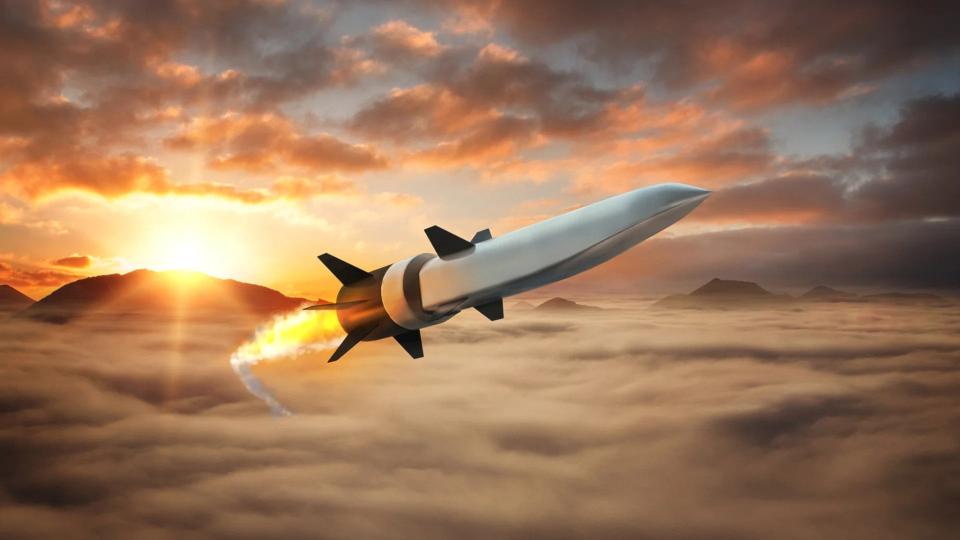
"Hypersonic Attack Cruise Missile (HACM) is a hypersonic air-launched weapon that will enable the U.S. to hold fixed, high value, time-sensitive targets at risk in contested environments from standoff distances," the Air Force's 2024 Fiscal Year budget proposal, which was released earlier this year, explains. In addition, "HACM offers a smaller form factor than ARRW for fighter integration and expanded bomber capacity, and thereby imposes cost on potential adversaries with additional complexity."
Interestingly, the pictures from the hypersonic weapon familiarization training event at Edwards yesterday also include a very good look at what appears to be a live AGM-183A missile. The weapon, seen loaded on B-52, has a yellow band around its body, which typically denotes a live round. It also has a protective cover over its rear end and is marked "AR-AUR-004," with AUR very likely standing for "All Up Round," a term that refers to a complete missile.
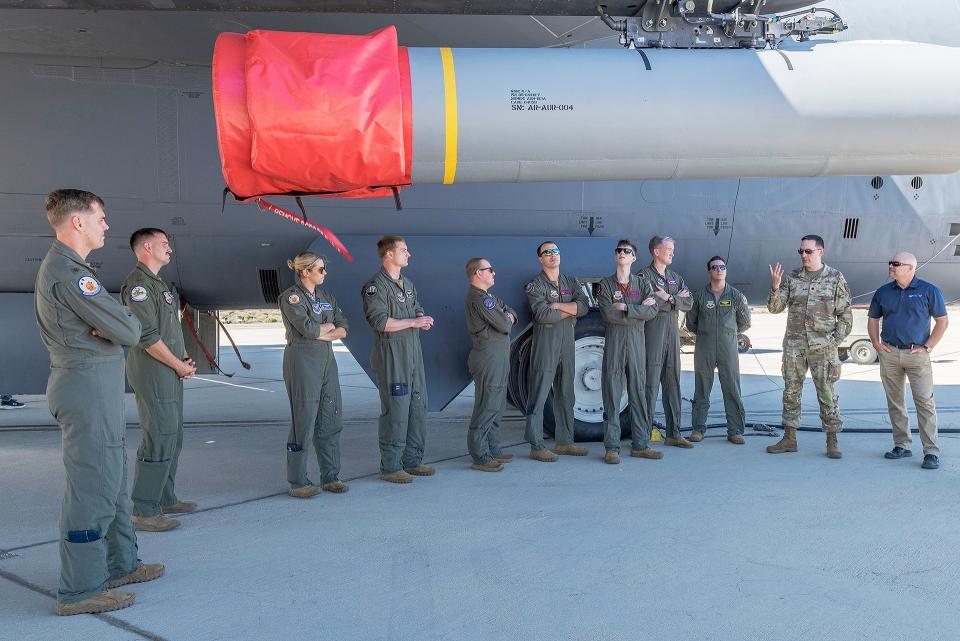

The Air-launched Rapid Response Weapon (ARRW), also designated the AGM-183A, is a missile that utilizes an unpowered boost-glide vehicle, a different kind of hypersonic weapon concept that you can read about in detail here. The design is much larger than what is expected of HACM and, to date, has only been launched by B-52 bombers. In March, the Air Force announced that it was canceling further work on the AGM-183A and refocusing its resources on HACM, though it would still complete the rest of its already planned ARRW flight tests. ARRW's test record is checkered and the Air Force declined to say whether the most recent known test of that design, which occurred in August, was a success or failure. Initially, it was planned that ARRW would be the USAF's first hypersonic weapon. It was slated to be in service now, but those plans were clearly overly ambitious.
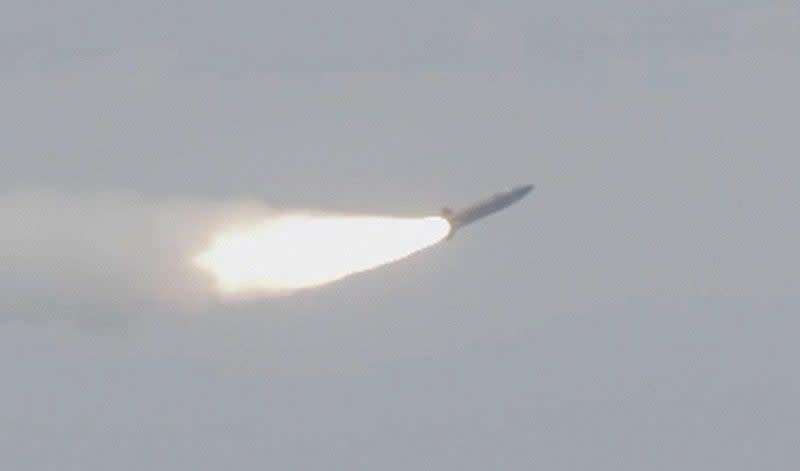
The Air Force's current plan is to begin fielding HACM in 2027, with the F-15E being the first aircraft to be able to carry it operationally. The expectation is that it will eventually be integrated onto other platforms. Members of the B-1, B-2, and B-52 bombers communities were all present at the event at Edwards yesterday. The service's forthcoming F-15EX fighters have been touted as a potential hypersonic weapons platform and its future B-21 Raider stealth bombers could be another future HACM carrier.
There could be interest from the U.S. Navy and the U.S. Marine Corps in HACM, as well. It's unclear if the F-35 or Super Hornet will be able to lug the big HACM missiles with enough efficiency that it would make sense to integrate them with USN and USMC aircraft, though. The Navy is separately pursuing an anti-ship optimized hypersonic air-breathing cruise missile of its own through the Hypersonic Air-Launched Offensive Anti-Surface Warfare program, or HALO.
The training event at Edwards also simply highlights the Air Force's commitment to developing and fielding hypersonic weapons in the near term and how it is laying the groundwork to be able to employ them operationally. It also underscores how important the service views them as part of its future arsenal, especially in the context of a potential high-end conflict against China in the Pacific.
With the Air Force aiming to begin fielding its first HACM hypersonic cruise missiles within the next four years, and the need to begin testing the design before that, more details about this weapon will continue to emerge. But at least for now, we have finally seen it or its precursor for the first time.
Contact the author: joe@thedrive.com

